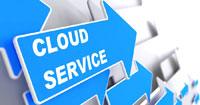 Klaas van der Leest, UK Managing Director, Intelecom dispels 7 myths about contact centers in the cloud.
Klaas van der Leest, UK Managing Director, Intelecom dispels 7 myths about contact centers in the cloud.
Cloud computing is here to stay and cloud providers are quick to quote the benefits of this new phenomenon including minimal upfront expenditure, payment per month, scalability plus application management including software and platform upgrades dealt with remotely.
However, many in the contact center world see mainly the negatives and cite seven common myths as reasons not to migrate to Contact Center as a Service (CCaaS) with a cloud-based contact center solution.
Let’s take a look at those myths so you can make a more informed decision about the benefits of CCaaS.
Myth One: Expensive legacy telephony kit has to be thrown away
The most common misconception when it comes to CCaaS is that organisations have to rip out existing telephony kit. This is not the case and modern cloud-based contact center services simply sit on top of existing infrastructure therefore retaining any original investment in equipment.
For those without legacy switches and handsets there is a complete cloud option but the majority of Intelecom customers choose to retain their original handsets and equipment making the change to a CCaaS model as simple as turning the old system off one day and commencing with the new service on the same day using the same legacy hardware.
Myth Two: What about resilience, service levels and call quality?
The CCaaS model is independent of hardware, software and agent location. Callers never receive an engaged tone because of the huge capacity of the cloud and rogue builders cannot cut through telephone lines. Agents and administrators have the freedom to log-on from any location. All that is required is a phone line (PSTN, SIP or mobile) and an Internet connection.
This is great in bad weather or a break in business continuity for any reason and in fact improves resilience and service levels. Add to that the reality that cloud providers test again and again in fact Gartner says “the design and construction of a CCaaS solution is inherently more resilient than most organisations can afford in their own infrastructures.”*
As for call quality working with an established provider, such as Intelecom, with over 15 years experience guarantees carrier grade telephony for every call as it is not dependent on VoIP.

Myth Three: How about functionality – can flexibility be guaranteed?
One of the major advantages of CCaaS is the ability for contact centers to seamlessly grow, or contract, which means capacity to cost effectively react to demand. Because of the building block approach which means that additional functionality and agents can be added or subtracted as required, cloud-based contact centers make perfect sense for seasonal businesses.
Payment per month, only for what is used, can save significant amounts in terms of operational and capital expenditure on hardware and licenses which are not fully utilized all year round. We call it: Business on your terms.
Myth Four: Loss of control and the ability to customise
The inherent flexibility of the cloud means that organisations can have increased control and customisation of their contact center solutions.
Satellite offices can manage and control their own locations, while sharing the same technology platform across the whole organisation and still benefit from centralized management. Pre-defined access rights mean that people see what they need to see while management remains in control. With one time integration in the cloud with other applications, via web services, is easy and secure, making for improved integration and business processes.
Myth Five: Costs can get out of control
The Total Cost of Ownership (TCO) argument is an easy one to dispel because customers are only charged for the resources used. There is no up-front capital expenditure or annual maintenance payments associated with on-premise equipment regardless of usage. Remember that in traditional on premise scenarios the user has to license for maximum capacity which therefore attracts higher support and maintenance fees.
Under the SaaS (Software as a Service) model actual agent usage can scale up and down with business demands and the monthly costs reflect this. The CCaaS pricing model has further attractions in terms of multi-channel operations as an agent is an agent regardless of channel making it easy and cost efficient to add new channels as they emerge. It has to be worth doing a comparison year on year in terms of CCaaS and traditional on-premise solutions.
Myth Six: What about security?
With centralized data storage security is enhanced with CCaaS. For regulated industries such as finance payment and card details can be secured by working with a Level 1 PCI-DSS** compliant cloud application specialist provider. Referring back to Gartner’s comment cloud providers are better placed when it comes to security than many organisations themselves – outsourcing security makes sense.
Myth Seven: Social Media is always an add on
Taking advantage of CCaaS allows organisations to utilize skill-based routing in queues regardless of which channel is used. To the cloud the channel is irrelevant, with queries coming into the same place. Social media capability is not an add-on when working with a CCaaS application specialist, it only becomes an extra if the supplier is not the solution developer.
Think again when it comes to those 7 most popular myths about cloud contact centers as the benefits far outweigh any perceived negatives.
*Gartner – Cloud Providers of Contact Center Services in Europe Offer New Options for IT Leaders
** Payment Card Industry Data Security Standard
About the Author
Klaas van der Leest is UK Managing Director of Intelecom. The company is a leading provider of contact management solutions and with over 15 years’ experience, Intelecom was one of the first to develop a cloud-based contact center.




